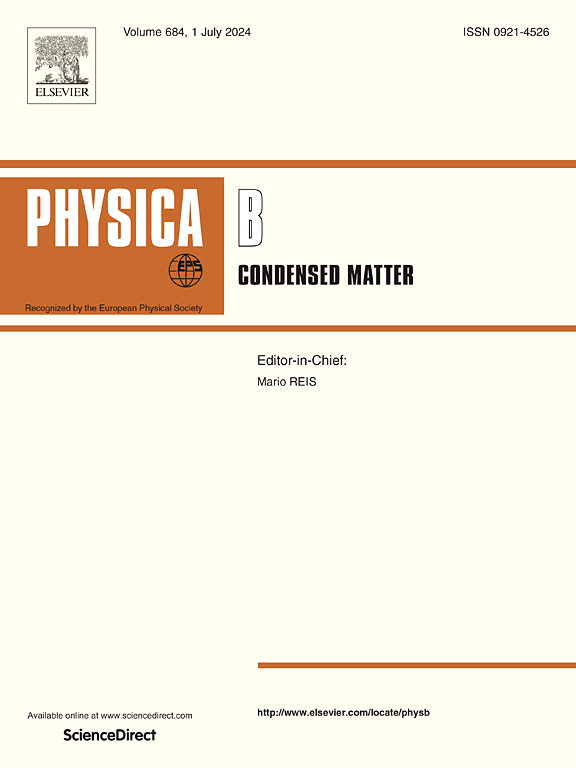拓扑绝缘体薄膜中Floquet工程与磁量子化的相互作用
IF 2.8
3区 物理与天体物理
Q2 PHYSICS, CONDENSED MATTER
引用次数: 0
摘要
从理论上研究了非谐振圆偏振光和垂直磁场下拓扑绝缘体(TI)薄膜的磁光特性。利用具有杂化和floquet诱导质量项的有效狄拉克模型,我们推导了Bi2Se3和Bi2Te3等材料的朗道能级谱。通过运动方程法计算光学响应,得到了未掺杂和掺杂状态下的纵向和霍尔磁化率的解析表达式。数值结果表明,受温度、载流子密度、光偏振和Floquet强度的影响,带间和带内跃迁具有丰富的吸收光谱。关键特征包括蓝/红光谱位移、“半峰”结构和极化诱导分裂,这些特征是Floquet波段工程的标志。我们发现带间跃迁比带内跃迁对Floquet相互作用更敏感,证明了光驱动TI系统的光响应可调性。本文章由计算机程序翻译,如有差异,请以英文原文为准。
Interplay of Floquet engineering and magnetic quantization in topological insulator thin films
We theoretically investigate the magneto-optical properties of topological insulator (TI) thin films under off-resonant circularly polarized light and perpendicular magnetic fields. Using an effective Dirac model with hybridization and Floquet-induced mass terms, we derive the Landau level spectrum for materials like BiSe and BiTe. The optical response is computed via the equation-of-motion method, yielding analytical expressions for longitudinal and Hall susceptibilities in both undoped and doped regimes. Numerical results reveal rich absorption spectra from interband and intraband transitions, influenced by temperature, carrier density, light polarization, and Floquet strength. Key features include blue/red spectral shifts, “half-peak” structures, and polarization-induced splitting, which serve as signatures of Floquet band engineering. We find that interband transitions are more sensitive to Floquet interaction than intraband ones, demonstrating the tunability of optical response in light-driven TI systems.
求助全文
通过发布文献求助,成功后即可免费获取论文全文。
去求助
来源期刊

Physica B-condensed Matter
物理-物理:凝聚态物理
CiteScore
4.90
自引率
7.10%
发文量
703
审稿时长
44 days
期刊介绍:
Physica B: Condensed Matter comprises all condensed matter and material physics that involve theoretical, computational and experimental work.
Papers should contain further developments and a proper discussion on the physics of experimental or theoretical results in one of the following areas:
-Magnetism
-Materials physics
-Nanostructures and nanomaterials
-Optics and optical materials
-Quantum materials
-Semiconductors
-Strongly correlated systems
-Superconductivity
-Surfaces and interfaces
 求助内容:
求助内容: 应助结果提醒方式:
应助结果提醒方式:


